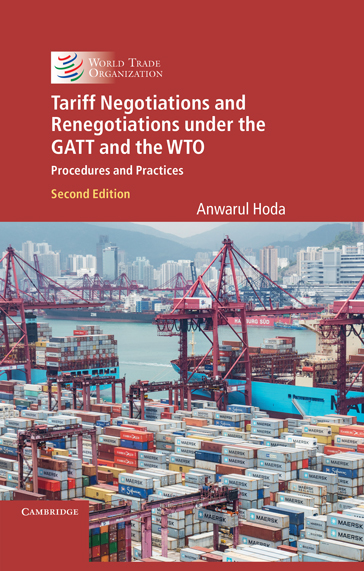Tariffs
Customs duties on merchandise imports are called tariffs. Tariffs give a price advantage to locally-produced goods over similar goods which are imported, and they raise revenues for governments. One result of the Uruguay Round was countries� commitments to cut tariffs and to �bind� their customs duty rates to levels which are difficult to raise. The current negotiations under the Doha Agenda continue efforts in that direction in agriculture and non-agricultural market access.
News
back to top
Introduction
- Information on tariffs
in �Understanding the �������ϲʹ������ϔ
- Information on tariffs and market access for agriculture
back to top
The mandate
- The original mandate: GATT article XXVIII bis (GATT 1947)
- The Doha
mandate: Paras. 16, 50, and 31 (iii)
- Mandate under the July
Package, 1 August 2005. See agricultural market
access in Annex A
and non
agricultural market access in Annex B.
- Schedules of market access
commitments on goods by �������ϲʹ������� Members
- There is no legally binding agreement that sets out the targets for tariff reductions. Instead, individual members of the �������ϲʹ������� have listed their commitments to cut and bind tariffs on goods schedules that are part of the Uruguay Round Agreements. Additional commitments were made under the 1997 Information Technology Agreement.
back to top
Get Tariff Data
Data on �������ϲʹ������� members' tariffs are of two types:
- Bound rates (the ceiling rates as listed in members� �schedules� or lists of commitments)
- Applied rates (the rates members currently charge, which can be lower than the bound rates).
�������ϲʹ������� tariff databases contain both bound and applied rates. Options for accessing and searching the databases can be found here.
See also:
> Goods schedules gateway
> Current situation of goods schedules
> The �Goods schedules and tariff data� section on each member's page
back to top
Work on tariffs in the �������ϲʹ�������
- Negotiations under the Doha Agenda
- Non-agricultural market access (NAMA)
- Agricultural market access and tariff reduction methods
- Committee on Market Access
- Agriculture: notifications on
current tariff quotas
- Committee of Participants on the Expansion of Trade in Information Technology Products
back to top
Disputes
Information on disputes and customs duties and tariffs in the �������ϲʹ������� Analytical Index.
back to top
Statistics on tariffs/customs duties
A central and user-friendly data portal to access a wide range of �������ϲʹ������� statistical indicators on international trade, tariffs, non-tariff measures and other indicators.
back to top
Links
Share
World Tariff Profiles

Co-published with Cambridge University Press in 2018.
Download Table of Contents and Foreword
Order printed copy
Video
Tariff Bindings Database: 1996-2011
The Tariff Bindings Database provides estimates of �������ϲʹ������� members' tariff binding rates — that is, the maximum upper bound rate at which a �������ϲʹ������� member could set a tariff under �������ϲʹ������� commitments — from 1996 to 2011. The database covers 143 members and 5,767 products at the HS6 level to allow for comparison across countries.
Problems viewing this page? If so, please contact [email protected] giving details of the operating system and web browser you are using.